
Servicing the Gottlieb System 1 pinball game
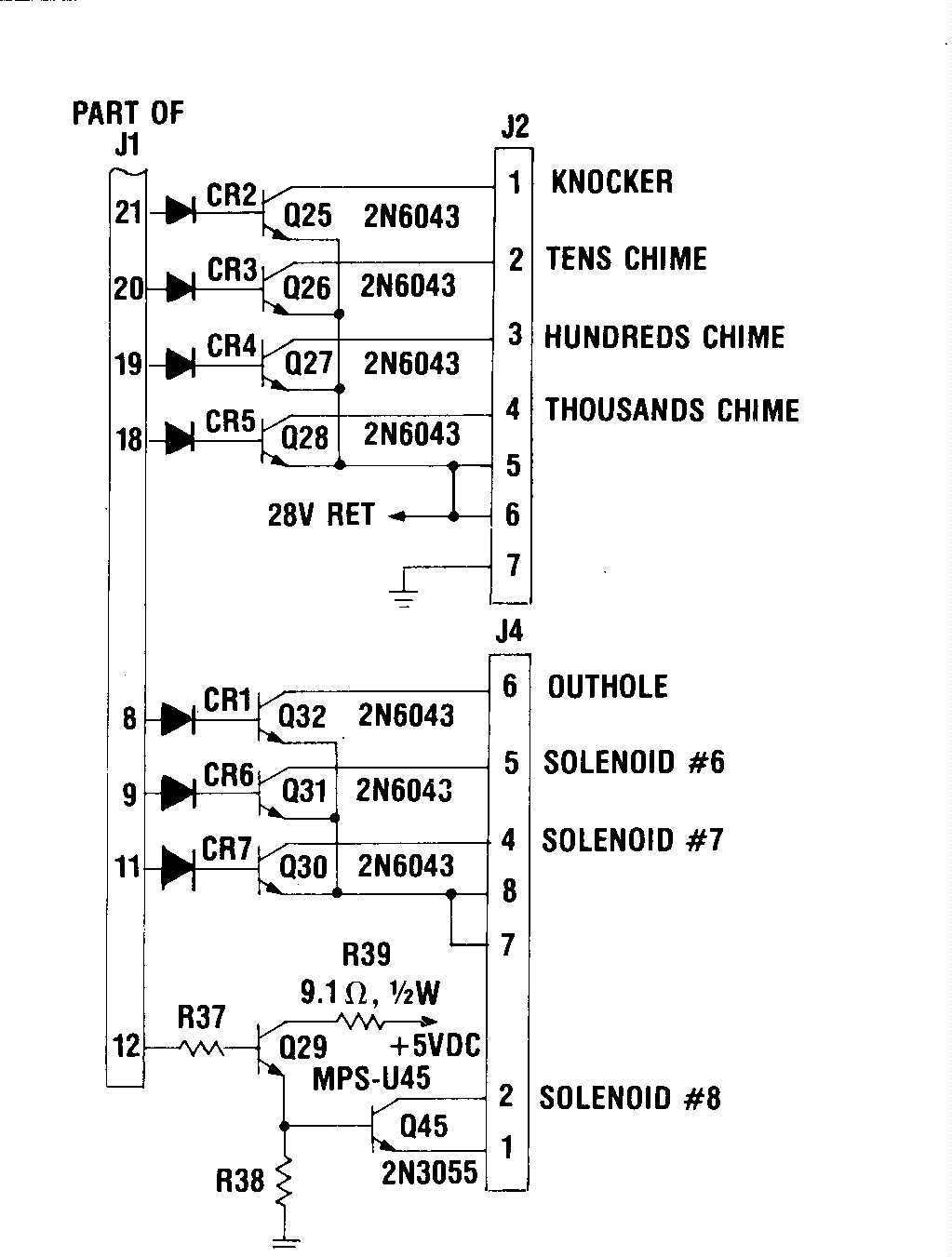
A proposed solution is being tested to prevent overvoltage from reaching the irreplaceable IC U5 - A1752CF after either the switch drives or returns experience a static electric shock or encounter the 24VDC solenoid bus. The protection mechanism is straightforward, involving the insertion of clamping diodes into the circuit. These diodes can be positioned across resistors R65 to R72, with the band of the diode (1N4002 or higher) soldered to the +5VDC end of the resistor and the non-banded end to the opposite side of the resistor. For resistors R57 to R62, connect the non-banded end of the diodes (1N4002) to the junction of the resistor and the trace leading to the IC, while the banded end should connect to a suitable +5VDC bus tie point. The (-12VDC) serves as the negative bus rail, and the (+5VDC) is the +5 bus rail. The diodes will prevent the input/output lines from exceeding the +5VDC line, thereby protecting the ICs from the 24VDC solenoid bus or the 6.3VAC light bus power. Earlier versions of Gottlieb driver boards did not isolate the MPU board from the solenoid driver transistors, which could lead to significant damage to the MPU board in the event of a coil short, resulting in high repair costs. It is advisable to verify the presence of these diodes on the board, as early boards can be updated by inserting diodes directly at the base of the driver transistors or by cutting traces on the back and soldering in diodes. The recommended diodes are from the 1N4002 to 1N4005 series; the 1N4001 should be avoided due to its insufficient voltage rating. All Gottlieb System 1 game owners are encouraged to confirm that this modification has been implemented, especially since factory modifications were only made after the third or fourth pinball in that series, and there is a possibility of having an unmodified driver board due to past repairs. Additionally, all Gottlieb electronic pinballs are known to have issues with ground connections, which can be traced back to the lack of a metal shield as a ground plane in their design. Gottlieb System 1 pins utilized a single ground pin connected to the regulator supply, which could weaken over time, similar to the issues experienced in System 80(X) boards. A simple solution for the ground problems in System 1 and 80(X) regulator supplies is to connect the ground plane of the regulator circuit board to one or two of the studs used for securing the circuit board to the regulator's heat sink, ensuring that the heat sink frame is also connected to the cabinet ground plane. This can be achieved by adding a wire from the (-) end of the large filter capacitor to the bolt on the underside of the frame. In the event that the supply requires disassembly for repairs, modifications can be made to a System 1 power supply, as indicated by a black wire in the accompanying image, along with the application of fresh heat sink compound on both the +60VDC regulator transistor and the -12VDC regulator. Typically, when the game is powered on, the displays should illuminate immediately without any delay or clicking sounds, and users may observe a wave-like display pattern. It is recommended to disable the problematic slam circuit at the MPU board by shorting the junction of R12 and C2 to ground. Finally, it is advisable to relocate the battery away from the MPU board, using two extension wires (preferably red and black) to position the battery at the bottom of the headboard in a plastic bag to prevent battery corrosion.
The circuit protection strategy described involves the use of clamping diodes to safeguard sensitive components from voltage spikes. Clamping diodes, such as the 1N4002 or higher, are critical in ensuring that voltage levels do not exceed the specified limits that could damage the IC. By strategically placing these diodes across designated resistors, the circuit can effectively redirect excess voltage away from the IC, thus providing a layer of protection against potential overvoltage scenarios.
The proposed design emphasizes the importance of proper grounding in electronic systems, particularly for the Gottlieb System 1 and 80(X) pinball machines. The modification of the ground connections to the regulator supply enhances the reliability and longevity of the circuit by minimizing the risk of ground-related failures. The incorporation of additional grounding points to the heat sink frame serves to improve the overall electrical stability of the system.
In summary, implementing these modifications not only protects the IC from overvoltage but also addresses grounding issues that may arise from the original design flaws in early Gottlieb pinball machines. This comprehensive approach ensures that the electronic components operate within safe voltage limits and enhances the reliability of the gaming system.A cure that we are testing is to prevent the over voltage getting to the irreplaceable IC U5 - A1752CF after either the switch drives or returns are hit with either a static electric shock or the 24VDC solenoid bus. The protection is simple, there needs to be clamping diodes inserted in the circuit. These can be placed across the resistors R65 - R 72 with the band of the diode (1N4002 or higher) soldered to the +5VDC end of the resistor and the non-band end to the other side of the resistor. Then on Resistors R57 - R62, connect the non-banded end of the diodes (1N4002. ) to the junction of the resistor and the trace leading to the IC and the banded end to a convenient +5VDC bus tie point.
The (-12VDC) is the negative bus rail, and the (+5VDC) is the +5 bus rail. The -|>|- is a diode. The (input/output) is EITHER the input or output line to be protected. This will prevent the input/output lines from going above the +5VDC line and thus protect the IC`s from the 24VDC solenoid bus or the 6. 3VAC light bus power. The earlier run of Gottlieb driver boards did not isolate the MPU board from the solenoid driver transistors, and if a coil shorted out, this can cause serious damage to the MPU board.
Essentially making it very expensive to service! Please check the picture on the lower left (here is a circuit diagram with the diodes) and see if you have these on your board. The early boards can be updated by inserting diodes directly at the base of the driver transistors (picture #2), or traces were cut on the back and the diodes soldered in (picture #3).
The recommended diodes would be 1N4002 to 1N4005 series, Do not use a 1N4001, at 50V it is not rated with a high enough breakdown voltage. We recommend that ALL Gottlieb System 1 game owners confirm this modification has been done, as even though the factory did this modification after the third or fourth pinball in that series, there is always the chance that you do NOT have a modified driver board due to a substitute repaired driver board some time in the past!
Please note that ALL Gottlieb Electronic pinballs have problems with the ground connections. This stems from their refusal to learn from Williams, Bally and Stern`s use of the metal shield as a ground plane for the game boards. Gottlieb System One pins had only a single ground pin going to the regulator supply, and this would weaken over time the same way as the System 80(X) problems are covered below.
A simple cure for the System 1 and 80(X) regulator supply ground problems is to connect the ground plane of the regulator circuit board to one or two of the studs that the securing screws use to hold the circuit board to the regulator`s heat sink, and then making sure that the heat sink frame is connected to the cabinet ground plane. All you need to do is add a wire from the (-) end of the large filter cap to the bolt on the underside of the frame - see the photo.
If you have to take the supply apart for repairs then here is a picture of the mod done to a System 1 power supply (the BLACK wire), also note the fresh heat sink compound (silicon) on the both the outboard +60VDC regulator transistor and the -12VDC regulator. Typically you will turn the game on and the displays will come on IMMEDIATELY. No 5 second delay, no "Click-Click". You might well see the displays showing a wave like this O0O0O0 then 0O0O0O right to left flowing. we recommend that you disable the troublesome/useless SLAM circuit at the MPU board by shorting to ground the junction of R12 and C2.
Finally, please move the battery away from the MPU board. We recommend that you use two extension wires (red and black if possible) and have the battery lying on the bottom of the headboard (in a plastic bag) to protect against battery corrosion. For more info see our battery corrosion page. 7) "Game won`t start Works for a minute or two, then stops Dies when the flippers are flapped Then you might have a pow
🔗 External reference
The circuit protection strategy described involves the use of clamping diodes to safeguard sensitive components from voltage spikes. Clamping diodes, such as the 1N4002 or higher, are critical in ensuring that voltage levels do not exceed the specified limits that could damage the IC. By strategically placing these diodes across designated resistors, the circuit can effectively redirect excess voltage away from the IC, thus providing a layer of protection against potential overvoltage scenarios.
The proposed design emphasizes the importance of proper grounding in electronic systems, particularly for the Gottlieb System 1 and 80(X) pinball machines. The modification of the ground connections to the regulator supply enhances the reliability and longevity of the circuit by minimizing the risk of ground-related failures. The incorporation of additional grounding points to the heat sink frame serves to improve the overall electrical stability of the system.
In summary, implementing these modifications not only protects the IC from overvoltage but also addresses grounding issues that may arise from the original design flaws in early Gottlieb pinball machines. This comprehensive approach ensures that the electronic components operate within safe voltage limits and enhances the reliability of the gaming system.A cure that we are testing is to prevent the over voltage getting to the irreplaceable IC U5 - A1752CF after either the switch drives or returns are hit with either a static electric shock or the 24VDC solenoid bus. The protection is simple, there needs to be clamping diodes inserted in the circuit. These can be placed across the resistors R65 - R 72 with the band of the diode (1N4002 or higher) soldered to the +5VDC end of the resistor and the non-band end to the other side of the resistor. Then on Resistors R57 - R62, connect the non-banded end of the diodes (1N4002. ) to the junction of the resistor and the trace leading to the IC and the banded end to a convenient +5VDC bus tie point.
The (-12VDC) is the negative bus rail, and the (+5VDC) is the +5 bus rail. The -|>|- is a diode. The (input/output) is EITHER the input or output line to be protected. This will prevent the input/output lines from going above the +5VDC line and thus protect the IC`s from the 24VDC solenoid bus or the 6. 3VAC light bus power. The earlier run of Gottlieb driver boards did not isolate the MPU board from the solenoid driver transistors, and if a coil shorted out, this can cause serious damage to the MPU board.
Essentially making it very expensive to service! Please check the picture on the lower left (here is a circuit diagram with the diodes) and see if you have these on your board. The early boards can be updated by inserting diodes directly at the base of the driver transistors (picture #2), or traces were cut on the back and the diodes soldered in (picture #3).
The recommended diodes would be 1N4002 to 1N4005 series, Do not use a 1N4001, at 50V it is not rated with a high enough breakdown voltage. We recommend that ALL Gottlieb System 1 game owners confirm this modification has been done, as even though the factory did this modification after the third or fourth pinball in that series, there is always the chance that you do NOT have a modified driver board due to a substitute repaired driver board some time in the past!
Please note that ALL Gottlieb Electronic pinballs have problems with the ground connections. This stems from their refusal to learn from Williams, Bally and Stern`s use of the metal shield as a ground plane for the game boards. Gottlieb System One pins had only a single ground pin going to the regulator supply, and this would weaken over time the same way as the System 80(X) problems are covered below.
A simple cure for the System 1 and 80(X) regulator supply ground problems is to connect the ground plane of the regulator circuit board to one or two of the studs that the securing screws use to hold the circuit board to the regulator`s heat sink, and then making sure that the heat sink frame is connected to the cabinet ground plane. All you need to do is add a wire from the (-) end of the large filter cap to the bolt on the underside of the frame - see the photo.
If you have to take the supply apart for repairs then here is a picture of the mod done to a System 1 power supply (the BLACK wire), also note the fresh heat sink compound (silicon) on the both the outboard +60VDC regulator transistor and the -12VDC regulator. Typically you will turn the game on and the displays will come on IMMEDIATELY. No 5 second delay, no "Click-Click". You might well see the displays showing a wave like this O0O0O0 then 0O0O0O right to left flowing. we recommend that you disable the troublesome/useless SLAM circuit at the MPU board by shorting to ground the junction of R12 and C2.
Finally, please move the battery away from the MPU board. We recommend that you use two extension wires (red and black if possible) and have the battery lying on the bottom of the headboard (in a plastic bag) to protect against battery corrosion. For more info see our battery corrosion page. 7) "Game won`t start Works for a minute or two, then stops Dies when the flippers are flapped Then you might have a pow
🔗 External reference
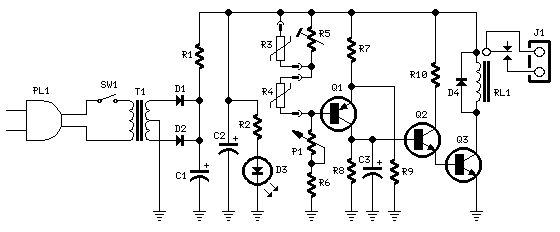
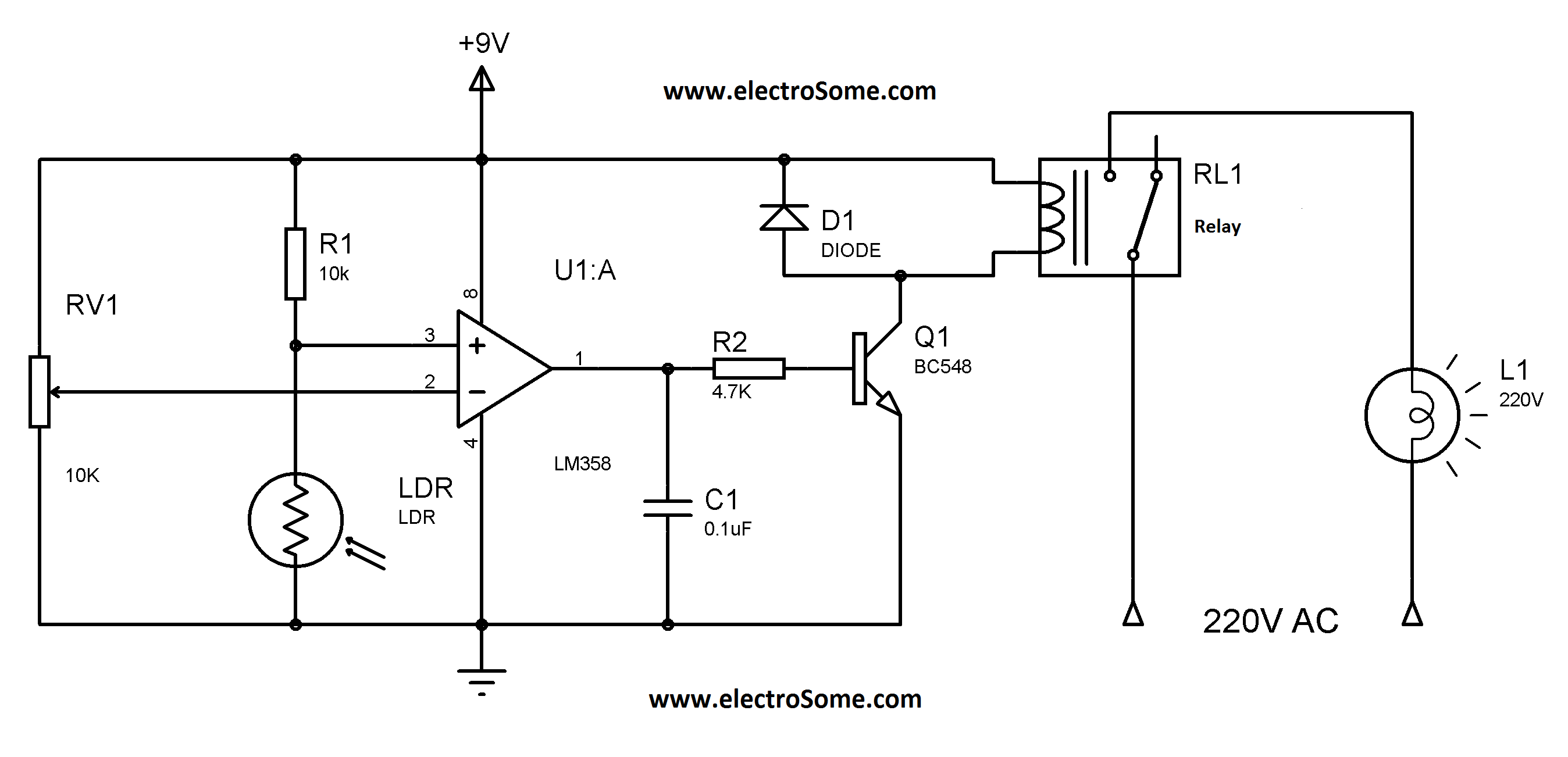
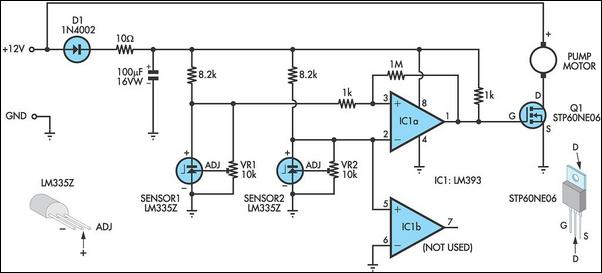
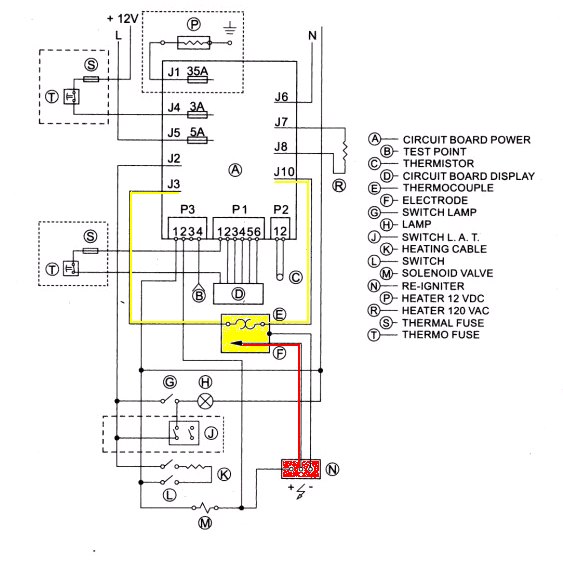
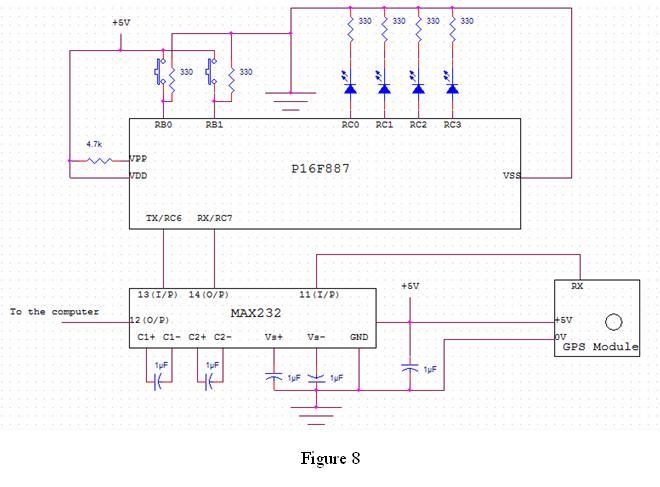
.png)